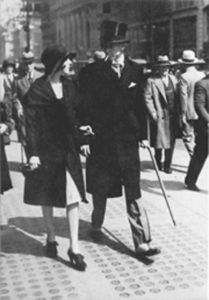Category: Copywriting
Do You Have Any Idea What They’re Talking About?
Here’s the headline and lead from a press release I happened to see:
Continuous Environmental Disinfection System Market Trends, Application Analysis, Regional Outlook, Competitive Strategies And Future Growth Till 2028
The QY Research released a latest market research report on the global and United States Continuous Environmental Disinfection System market, which is segmented by region (country), players, by Type and by Application. Players, stakeholders, and other participants in the global Continuous Environmental Disinfection System market will be able to gain the upper hand as they use the report as a powerful resource. The segmental analysis focuses on revenue and forecast by region (country), by Type and by Application for the period 2017-2028.
Do you have any idea what they’re talking about? I’ve been writing press releases for my marketing clients for decades–and I have NO idea what this one is about. Which means this press release, IMHO, is an abject failure.
Compare that with the clarity of message in the picture. Greta Thunberg pointing an accusatory finger doesn’t even need any words to communicate.
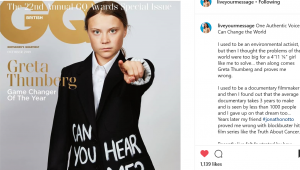
A press release should never be a bunch of bland, unintelligible gobbledygook. It should leave the reader with no doubt about what it’s about AND what you want them to do next. And the best press releases tell “the story behind the story.” They give the reader reasons to be involved, to get caught up in the experience, and to think positively about my client.
As an example, when I was hired to write a press release for a new book on electronic privacy, my headline was NOT “Electronic Privacy Expert Releases New Book”–because curing the reader of insomnia didn’t happen to be one of my goals I told the story behind the story, and the headline was “It’s 10 O’Clock. Do You know Where Your Credit History Is?” The book first showed up in the third paragraph. And the reader read that far, because the reader was interested.
Want that sort of magic for your business? Visit this link on my Frugal Marketing site to find out more.
Dems–Some Message Points for You
Don’t the Republicans ever get tired of their own shameless hypocrisy? A lot of the rest of us are sure tired of it. It’s time for the Dems to focus their messaging on why the Party of Never-if-a-Democrat-proposed-it is no friend of the people.
I offer these as a gift to the Democratic Party, its candidates, and its supporters.
- Why do Republicans support socializing the costs of billionaires’ mistakes and misdeeds while privatizing their profits? Why should working folks have to pay to clean up their mess when billionaires don’t even pay taxes on much of their wealth?
- Why do we pay so much more for health care, for university education, for prescription drugs, for so much else–and get less for our money than most other countries? Why did Republicans hold all three branches of government and come up with nothing to address these crises?
- If we want to free the world of power-mad dictators and thugs like Putin, we need TRUE energy independence from renewable sources like solar, wind, small-scale hydro, and geothermal–so Russia, Saudi Arabia, and other countries can’t push us around because of our dependence on fossil fuel. That’s also our way out of the carbon crisis.
- If you want to halt fuel-cost-related inflation, ditto. That will lead to better health outcomes, too.
- Green energy will continue to create good, well-paying jobs right here in the US–and by the way Biden has presided over the longest steady growth in employment since 1939.
- If expulsions of immigrants at the border due to fear of COVID–which are against both international law and human decency–aren’t warranted for Ukrainians, there’s no justification for their use to keep Black and Brown people out. Don’t accede to Republicans’ racist demands to hold COVID prevention/protection/treatment funding hostage to keep this cruel, illegal, and discriminatory policy in place.
- Stop defending domestic terrorists! January 6 was an attempted coup, an attempt to blow up our democracy. Even Republican Secretaries of State admit that the 2020 election was the most fraud-free in history and that Biden won honestly (something we can’t say with certainty about Trump in 2016, since the Republicans blocked recounts in three crucial swing states). And yet you refuse to discipline even the most blatant seditionists in your ranks! Doesn’t democracy mean anything to you anymore?
- Why are you, the party that claims to believe in freedom, passing laws that take “cancel culture” to levels approaching those of early Nazi Germany and Stalin’s Russia? How dare you make it a crime to teach or read honest history! How dare you try to suppress the speech rights of whole classes of people! How dare you try to roll back women’s reproductive rights, the right of people of color to vote, and the right to live without fearing violence because of who you are, what way you worship, or what you look like? Stop trying to grasp at your fading power OVER others and focus on your power TO do good in the world (hint: oppressing others is not doing good in the world)
- Why was it OK to refuse to even hold a hearing on Obama’s nomination of Merrick Garland because nine months before the election was “too close to the election”–while Barrett was rushed through just weeks before?
How to Get a Whole Country to Change a Behavior
The owner of the Step Into the Spotlight discussion group, Tsufit, asked what kind of marketing could help Canada go smoke-free by 2035. My answer doesn’t fit into LinkedIn’s comment space, so I’m sharing it here:
Ooooh, what a wonderful project! If I might make some cross-border observations that an actual Canadian might find lacking, I would, first of all, identify the key attributes of not just each province but each region of each province and target different themes and different platforms that will work will for each. I’d remember the wild successes on my side of the border of “Don’t Mess With Texas”–which started as an anti-littering campaign and became an unofficial state slogan and a core part of Texans’ identity–and the “I Love New York” campaign that helped the Big Apple find its way from near-depression in the 1970s to, once again, the happening place that “everyone” wants to be part of–and then the state successfully expanded the campaign to talk about all the other parts of New York State.
In libertarian rural Alberta, it might be about the personal freedom to enjoy clean, smoke-free air and the desire to keep out of the clutches of National Health Service doctors by staying healthy. For Quebec City, ads (in French, of course) that might make Anglophone Canadians choke but appeal to the sense of separate identity, e.g., “Oui, we are a beautiful capital city–but we also want to be the capital of good health and clean air.” In a more rural part of Quebec, such as the Gaspésie, they might tout the health benefits of the rural lifestyle, fresh food, and clean lungs.
In the Inuit areas, it might focus on communitarianism, tribal values, etc. For the Metro Toronto and Vancouver markets, perhaps an appeal to cosmopolitan sophistication. “Thinking of smoking as cool is SO 1950s. We’re too smart for that now.”
This national effort of a series of hyperlocal campaigns would need people on the ground in each area to really figure out the touchpoints for each audience slice. And it would be across many media, from traditional TV and print and radio to Instagram, TikTok, etc.
AND it would include a significant curriculum component starting around 3rd grade, to build the defenses of rising generations against tobacco industry hype, to inoculate students with the knowledge of health, economic, and pollution/carbon consequences, and to foster development of healthy lifestyles and a different set of pleasures.
C, J, H: My Three “Brogan Words” for 2020, Part 1
Every year, bestselling author and social media visionary Chris Brogan challenges his huge reader base to come up with three words to provide focus for the coming year. This year, I decided to take the challenge for the first time since 2016. And this time, I’m going to emblazon them on a printout in huge type, and post it where I can see my words every day. My three words are:
- Clarity
- Justice
- Healing
Clarity
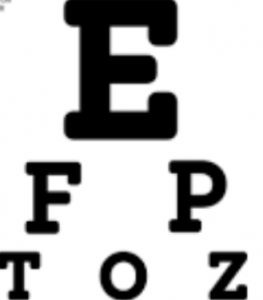
The year 2020 reminds me of 20/20 vision: seeing with perfect clarity. While I don’t expect to achieve perfect clarity, even with the new glasses I’ve just been prescribed ;-), I do want to focus on seeing and acting as clearly as possible.
It’s been several years since I changed the focus of my business toward helping other businesses (and other types of organizations such as nonprofits) find the sweet spot where profitability intersects with environmental and social good.
I now market myself as the person who can help any organization discover opportunities to do go in the world by creating, identifying and re-purposing, and/or marketing profitable products and services that turn hunger and poverty into abundance, war into peace, and catastrophic climate change into planetary balance.
I’ve gotten a lot clearer in my messaging since starting this quest in the summer of 2013, since giving my TEDx talk in 2014, and even since publishing my 10th book, Guerrilla Marketing to Heal the World, in 2016 (which Chris Brogan endorsed, along with Seth Godin, Jack Canfield, and many others).
But I’m still nowhere near as clear as I need to be about:
- Who wants to pay me to do this work?
- Which services they most want, and to achieve what goals?
- How to set a price structure that’s fair both to solopreneurs and large corporations?
- Who do I most want to serve?
I’m beginning to figure out the answers. I’ve settled on pricing based on the size of the organization, which seems reasonably fair because larger organizations are more complex and therefore a task such as a marketing plan our outlining a product development campaign will take a lot more of my time–but I’m not sure I’ve got all the bugs worked out yet. I’ve realized that I’d rather work with small entities than large ones, but I am very open to being farmed out by a larger entity to their smaller customers, suppliers, or business units–and to the larger entities sponsoring me in other ways, such as funding my speaking to organizations that can’t otherwise afford me.
Hopefully, seeing that message of clarity on the wall of my workspace every day will inspire me to figure all this out, and to make my message so clear that everyone understands exactly how I can help and why it’s important.
I’ll discuss Justice in Part 2 (with lots of links), and Healing–including a deeply personal experience that happened to me this month–in Part 3.
Guerrilla Marketing, According to Hubspot
As the primary author of two books in the Guerrilla Marketing series (Guerrilla Marketing to Heal the World and Guerrilla Marketing Goes Green) and a speaker at the recent Guerrilla Marketing Summit, I was very interested in how the digital marketing pioneer Hubspot views the whole Guerrilla Marketing concept and brand.
In their seven examples, I was particularly thrilled that they included UNICEF’s super-successful Dirty Water campaign.
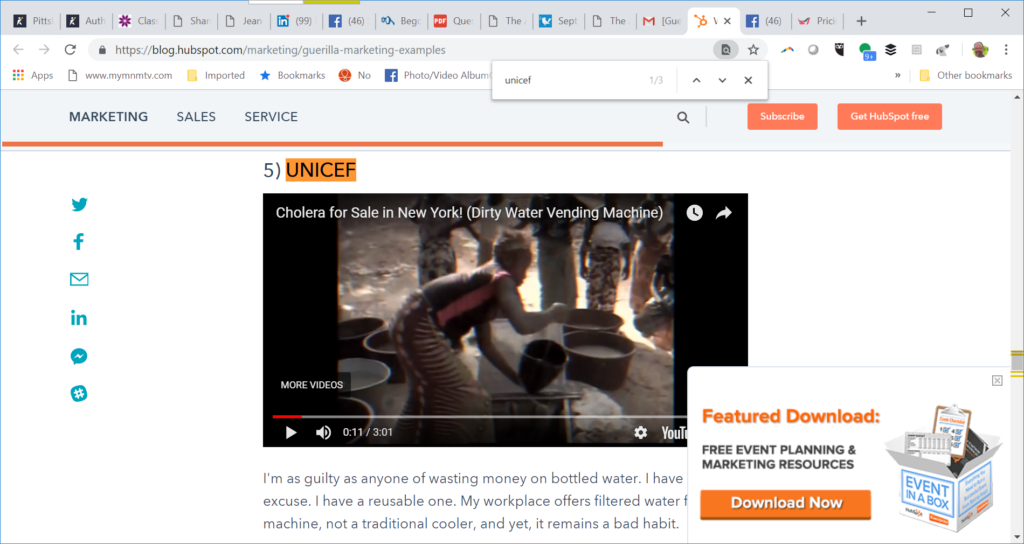
After all, my two Guerrilla books are the ones that extend the Guerrilla Marketing concepts to the worlds of social change of environmentalism. This was a bit of a gamble for UNICEF; there were obviously significant costs in everything from developing the branding to shipping the filthy water. I hope they’re replicating the campaign in other cities, and creating strong follow-up messaging targeted specifically to those touched by this campaign, to keep them donating into the future.
My definition of Guerrilla Marketing is a lot broader than Hubspot’s. To me, Guerrilla Marketing has three main parts:
- Being nimble in our thinking and actions, seizing opportunities quickly, including news tie-ins
- Going outside and beyond conventional thinking patterns–disrupting the mental flow to get noticed, to move people to action, but in ways that don’t feel obnoxiously intrusive
- Focusing not on how great your brand is (the mistake I see so many marketers make. I call it “we, we, we all the way home) but on the results: the benefits, the problems solved, the pain relieved, the wants and needs met or exceeded–whether for the individual customer or for the planet and the species that live on it.
Hubspot’s choice of the Bounty sculpture is a beautiful example.
Ideally, Guerrilla Marketing will be done at little cost, too. But, as the UNICEF and Grammy examples show, there are plenty of Guerrilla Marketing opportunities that aren’t necessarily cheap.
Let’s look at those two more closely, because they offer us very different lessons. It will take you exactly three minutes and 40 seconds to watch the two videos. Go ahead; I’ll wait.
UNICEF
This elaborate campaign involved creating a brand, bottling filthy brown water, and offering it on the streets of New York. The goal: to increase awareness that the clean, drinkable water we take for granted in most of the US (and the developed world generally) is unimaginable luxury for people at the margins in developing countries. Many have to drink filthy, disease-causing water, and many get very sick. The campaign encouraged people to use the money they currently spend on bottled water to provide clean water for those who don’t have it. Each dollar could supply a thirsty child for 40 days. The video documents the whole campaign, in a fast-paced three minutes.
I found this very effective. I love the way they were able to not just raise awareness, but funds. The negative branding is definitely a Guerrilla tactic, and the results are clearly positive. Bravo!
Grammy Ad
This was an expensive missed opportunity. Maybe it’s a generational thing, but this one really didn’t work for me. Great concept, but terrible execution. I want the protagonist be moved and touched by what he’s seeing, but he strolls through the talking posters, blithe and indifferent. He’s not even glancing at the posters! What’s going on in HIS head? We don’t even get a hint. Have the talking portraits of Harry Potter and the constant animations of things people didn’t animate in the past made a talking poster no-longer-special? And while my wife frequently accuses me of ADD, I found that I hadn’t even processed and recognized one song before it switched after a few seconds to something else. (And OK, I confess, this was not music I’m familiar with anyway). Some of the problem was that the songs all sounded so similar and all seemed to have the exact same beat.
I also think the choice of having multiple copies of each poster was unfortunate. Yes, I recognize that’s a common way to display posters in urban environments. It has NEVER worked for me. I’ve studied some of the advertising masters like David Ogilvy, and they taught me the importance of white space: of having one central object (or person, animal, tree…) able to stand out from what’s around it, because of that empty space around it. If I were buying billboards, instead of, say, 9 medium-sized repeated pictures, I’d use the space for one much larger version of the image. I’d use that white space and not add to the clutter.
Imagine walking down the street and seeing a 20-foot billboard suddenly start to sing with its one and only mouth! Imagine hearing snippets of three or four songs that each have a clear identity, in a true medley, each sung by one giant poster of an artist you recognize instantly. Would you be as blase as the protagonist? I doubt it!
So maybe the commercial would need a full minute instead of 39 seconds. That’s OK. In print copywriting, it’s perfectly OK to take as much time as you need to tell the story; I’ve seen emails with links to 40-page sales letters. Even in broadcast, even though airtime is expensive, we’ve seen many successful commercials that ran an hour (they’re called infomercials and they run on shopping channels). The UNICEF video was three entire minutes and I watched without multitasking, because I was interested both in their message and how they promoted it. If you can’t get it done in less than a minute, either buy more airtime, or script a commercial that CAN get it done in the time you bought.
Hon. Alan Grayson: My son’s science experiment, on negative ads
Guest post from former Florida Congressman Alan Grayson. This originally ran in his email newsletter. I’m including all his original links and reprinting with his permission. I especially love this quote: “if you are a useless lout who has done nothing good for The People, but you still aspire to public office, then negative ads really are your only alternative.”
It’s worth noting not only how badly negative ads position our perception of politics (“ah, they’re all crooks,” etc.)—but also the growth of some promising alternatives to the negativity. One great example is ranked choice voting. Experts including Voter Choice Massachusetts explain that ranked choice (also called instant runoff) provides incentives NOT to use negative ads.
—Shel Horowitz

My son is doing a science experiment on politics and negative advertising. And the results are in. But first, a few words on negative ads.
Is Thought-Leadership an Outdated Cliche?
Some marketers are engaged in a vigorous debate between people who identify as “thought leaders” and those whose skins crawl when they hear the term.
Whether you love or hate the term, “thought leader”, marketing by showing leadership through content and letting people meaningfully engage with those ideas is undeniably powerful.
That type of marketing hooked me when I first tried it, as a 15-year-old 3rd-year high school student, and I’ve been using it ever since. First, I used it only to spread my ideas. Later, I also marketed products and services based on those ideas. And those ideas built me a decent following (and, eventually, a decent consulting practice)—sharing them through my books, articles, presentations, interviews, media coverage, etc.
This takes time and energy, and I know many people who do it better than me. But it certainly can be done. One of my book launches garnered over 1,000,000 short-term Google hits (for the book title, an exact-match four word string that wouldn’t show up in any other context). It’s the only time anything I’ve done got a million hits on Google.
I’ve even managed to help shift several mindsets at the international or national or local level.
My biggest success was changing the attitude about a proposed local mountaintop housing development from “this is terrible but there’s nothing we can do” to “of course we’ll win! The question is how.” This campaign took just over a year and used everything I knew in 1999-2000 about marketing AND community organizing (and the knowledge/labor of many others)—but the mindset shift took only four or five months. And that mindset shift created the conditions for our victory.

I also like to think I helped change the idea that business has to be evil. Of the five books I’ve published since 2003 (and the 10 since my first book came out in 1980), four show how business can profitably address issues ranging from business ethics to ending poverty—while reversing environmental destruction. I’ve given dozens of “Making Green Sexy”, “Impossible is a Dare,” and other talks on how business can be heroes.) And it’s been years since I’ve heard “business ethics? That’s an oxymoron!” When I first started talking about business ethics as a success strategy, I heard that false “wisdom” constantly.
I like to think my activity is part of WHY I no longer hear that horrible sentence.
Leading with ideas means finding others who will amplify those ideas. It’s not a coincidence that I actively seek out media coverage, endorsements, and more.
My latest book, Guerrilla Marketing to Heal the World has a blurb from Chicken Soup’s Jack Canfield on the front cover, another from Seth Godin on the back, and some 50 endorsements on the front pages. It has 4 guest essays from best-selling authors. These are some of the ways I’ve built credibility and gotten people interested, even though the book no longer has a current-year copyright.
One review of that book didn’t appear until 17 months after publication—and I’ve gotten reviews on books that were up to eight years old at the time. When you write about issues and do so with substance, your book can attract interest for years.
Of course, events can shift the relevance. If you try to repurpose articles on how to survive the coming Y2K crisis or books on the presidencies of Hillary Clinton, Mitt Romney, or Al Gore, thought leadership is not the image you’ll project. 😉
10 People Who Changed My Life
There are hundreds more I could honor. These 10 are all people I knew personally. I chose them somewhat randomly, basically who came top of mind first. I am grateful to all of them even if the interaction was painful when it happened.
- My mom, whose commitment to racial justice extended to desegregating the apartment building we lived in. She was also a tester for the Urban League, making sure that when a black family was told an apartment was already rented that it was really rented—by applying to live there.
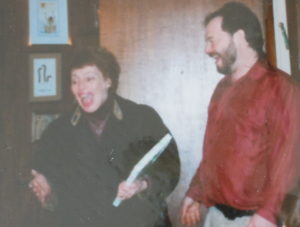
Walking my mother, Gloria Yoshida, into her 65th-birthday surprise party, 1998 - The speaker I heard when I 12, at my first peace demonstration, who told me the Vietnam war was undeclared—and brought my false reality crashing down around me.
- The idiot who made me sit in the children’s section of a movie theater with my full-price adult ticket (also age 12) and gave me my first experience of discrimination-based injustice (for being part of a class of people). I started a boycott of that cinema that has now continued for 48 years, and thus had the first experience of recognizing that I had power to change things.
- Mrs. Ehrlich of the Bronx High School of Science English Department in the 1970s, who believed the lie I’d told that I had turned in an assignment. Horrified, she said she’d never lost a student paper before. I felt intense guilt and realized that my action had hurt someone innocent. I’ve done my best not to repeat that and to take responsibility for my actions even when I don’t like the consequences.
- My first grade teacher, Mrs. Gross of Westchester Day School in the 1960s, who recognized that I was already a good reader and sat me in the back of the room with a 4th grade geography text while she inflicted Sally-Dick-and-Jane on the rest of the class. I still love reading, still love maps, and that was probably the first time I recognized how fascinating the world is, how people lived so differently in different parts of it.
- The college classmate who yelled at me that I was extremely and consistently selfish. It hurt like hell at the time, but on reflection, I realized he was right. And I changed my behavior! (Years later, I went up to him at a reunion and thanked him. He didn’t even remember the incident.)
- Dr. Jeffrey Lant, who was the first person to help me discover you-centered, benefit-focused marketing.
- Dean Cycon, CEO of Dean’s Beans, who combined the strongest moral compass and the best sense of humor of any business owner I know. (I never got to meet the late Ray Anderson; he might have topped Dean in his commitment).
- Maggie Kuhn, founder of the Gray Panthers, who started a whole social movement after mandatory retirement forced her out of a quiet job within the Presbyterian Church.
- Pete Seeger, who was probably the first to show me that the arts could change people’s minds and create action for social and environmental justice.

